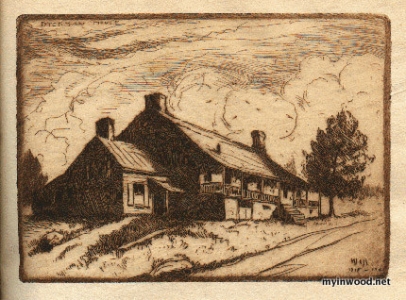
Built by William Dyckman in approximately 1784, this farmhouse was once the center of a thriving farm more than 250 acres in size. Dyckman Farmhouse, along with the smokehouse and reconstructed “Hessian Hut,” has been a public museum since 1916.
Family patriarch Jan Dyckman arrived in New Amsterdam in the 1660s and began acquiring land in northern Manhattan.
At the time of the American Revolution, Jan’s grandson William had inherited the Dyckman estate and the family homestead stood near present-day 210th Street and the Harlem River.
During the British occupation of Manhattan (1776-83), William Dyckman and his wife Mary fled their home and sought refuge in upstate New York.
When the war ended, William returned to find his family’s home destroyed. It is believed that he immediately began building this new farmhouse, choosing a location further inland and on the newly re-routed Kingsbridge Road (now Broadway).

The small, two-story Dutch Colonial style home that William built served three generations of the Dyckman family.
William’s son Jacobus took over in the 1790s, re-established the farm, and saw it prosper. After his death, Jacobus’ two bachelor sons Isaac and Michael inherited the farmhouse.
By the 1850s, Isaac, Michael and their nephew Isaac Michael Dyckman moved away, marking the end of Dyckman family residency here.
Following Isaac’s death in 1868, Isaac Michael inherited much of the property. The farmhouse left family ownership by the 1870s and served primarily as rental housing for the next several decades.
By the early 20th century, the farmhouse was in disrepair and the rural character of the neighborhood was changing.

To ensure the farmhouse’s preservation, photographed above in 1895, Mary Alice Dyckman Dean and Fannie Fredericka Dyckman Welch, daughters of Isaac Michael, bought the property in 1915. With their husbands, curator Bashford Dean and architect Alexander McMillan Welch, they undertook a major restoration project to bring the farmhouse back to what they believed was its earliest appearance. They furnished the interiors and landscaped the property.

A reproduction smokehouse and reconstructed “Hessian Hut” were also added to the site.
The Dyckman Farmhouse is owned by the New York City Department of Parks and Recreation and is a member of the Historic House Trust of New York City.
For information about the Dyckman House Museum, visit their website.

























